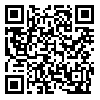Tue, Dec 2, 2025
[Archive]
Volume 11, Issue 4 (2-1998)
Med J Islam Repub Iran 1998 |
Back to browse issues page
Download citation:
BibTeX | RIS | EndNote | Medlars | ProCite | Reference Manager | RefWorks
Send citation to:



BibTeX | RIS | EndNote | Medlars | ProCite | Reference Manager | RefWorks
Send citation to:
JAMSHIDI FARD A, SEDGWICK E. MEDIAN NERVE STIMULATION PO TENTIATES THE MU SCLE RESPONSES TO TRANS C RANIAL MAGNETIC STIMULATION. Med J Islam Repub Iran 1998; 11 (4) :341-347
URL: http://mjiri.iums.ac.ir/article-1-1079-en.html
URL: http://mjiri.iums.ac.ir/article-1-1079-en.html
From the Department of Physiology, Arak University of Medical Sciences, Arak, Islamic Republic of Iran,
Abstract: (4526 Views)
Motor responses evoked by transcranial magnetic stimulation OMS) or
transcranial electrical stimulation (TCS) can be facilitated by a prior conditioning
stimulus to an afferent nerve. Two facilitation periods are described short (SI), when
the nerve stimulus is given near 0 to 10 ms after cranial stimulation, and long (LI),
when nerve stimulation is given 25-60 ms before the cranial stimulation. I These
facilitation periods were examined in more detail in 10 normal consenting subjects.
The study has ethical committee approval. Focal cortical TMS was applied
contralaterally by a figure-of-eight coil over the "hot spot" for the right hand muscles
and the strength adjusted to be just above twitch threshold for the relaxed muscle.
Conditioning electrical stimuli were applied to the right median nerve at the wrist,
again at a strength just suprathreshold for a twitch in APE. The conditioning-test (CT)
interval was varied from -80 to + 1 0 with respect to the magnetic stimulus and 5
magnetic stimuli were tried at each interval. The results confirm the short facilitation
period when the C-T interval was -6 to +3 ms. Consideration of the timing indicates
that this must occur at the spinal segmental level. The long period of facilitation
lasted from 27-70 ms, but it was divided into two periods (27-35 and 55-70 ms) in
all subjects, separated by an interval of about 20 ms during which the test response
fell to control levels. The long late facilitations may be cortical as the earliest
facilitation began at 27 ms having the afferent volley reached the sensory cortex at
20 ms. The long interval facilitation consists of two temporally separate processes,
implying separate cortical mechanisms creating a bimodal excitability cycle at the
level of motor cortex.
Type of Study: Original Research: Basic Science in Medicine |
Subject:
Physiology
| Rights and permissions | |
 |
This work is licensed under a Creative Commons Attribution-NonCommercial 4.0 International License. |





